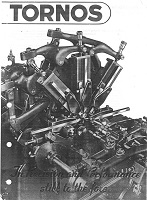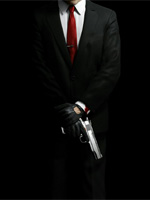offline
- mean_machine
- Legendarni građanin

- Pridružio: 23 Dec 2006
- Poruke: 12618
|
Odličan tekst u vezi F-16XL
Citat:
The Revolutionary Evolution of the F-16XL
By F. Clifton Berry, Jr.
Proof is in the Flying
At the Air Force Flight Test Center, I was privileged to fly in the F-16XL with Experimental Test Pilot Jim McKinney of General Dynamics. Jim flew the maiden flight of the F-16XL on July 3, 1982. That was accomplished twenty months after GD, having received Air Force assurance of support, decided to turn their design concepts into a flying aircraft. Also, I was able to discuss with Jim and Harry Hillaker, who is now GD’s Vice President and Deputy Program Director for the F-16XL, the derivative fighter evaluation program the aircraft has been undergoing for more than a year. For that purpose, we joined Lt. Col. Marty Bushnell, USAF, who commands the Combined Test Force (CTF) on the F-16XL evaluation, and Lt. Col. Joe Bill Dryden, USAF, the chief Tactical Air Command member on the CTF.
Under the derivative fighter evaluation program, 240 F-16XL flights were planned to be completed by May 15, 1983, by two aircraft: a single seater and a dual seater. In fact, within the time and funding provided, 369 test flights were accomplished. Colonel Bushnell said that the reliability and maintainability of the F-16XL appear to be the same as that of the operational F-16. These features should support XL sortie rates in service similar to those of the F-16. About thirty-six sorties per month were averaged in the basic test period through May 15. Among other results of the tests was validation of the predicted improved performance of the aircraft. An extended test plan called for an additional seventy-two flights, but more than that will be achieved by year’s end, the CTF people believe.
Our flight was in aircraft 75-0747. It was the third F-16 full-scale development aircraft. Its sister ship is single-seater 75-0749, which was the fifth full-scale development aircraft. First, we discussed characteristics of the aircraft and specific plans for this flight. Jim McKinney explained that we would explore the four corners of the F-16XL’s performance envelope: high altitude/low speed, high altitude/high speed, low altitude/low speed, and low altitude/high speed.
The aircraft was loaded with twelve Mk 82 50-pound general-purpose bombs, four dummy AMRAAM missiles, and two AIM-9 Sidewinder missiles. Internal fuel was 10,200 pounds (full fuel for the prototype is 10,600 pounds). Allowing for fuel consumption for engine start and taxi, gross takeoff weight was 43,500 pounds. Jim estimated the takeoff roll at a bit more than 3,000 feet.
The aft cockpit of the F-16XL test aircraft is configured with the current avionics and sensors that are in production standard F-16C and D aircraft. Should the derivative fighter evaluation result in the F-16XL’s becoming USAF’s dual-role fighter, the avionics suite will be the same as that being developed under the Multi-Stage Improvement Program (MSIP) for the F-16C/D, which will start being delivered, with initial core systems, in 1984.
When fully implemented, MSIP will provide the desired night/under-weather, navigation/weapon-delivery and beyond-visual-range (BVR) missile capabilities. The back seat in the Dual-Role Fighter version would have the controls and displays, including a color-moving map, added to provide the independent or interactive task coordination required to fulfill the dual-role missions. If additional, or future, avionics are needed, the MILSTD-1553 avionics multiplex bus will be able to accommodate virtually anything by a simple reprogramming of its software.
Jim McKinney re-familiarized me with the rear cockpit controls and emergency procedures. Then we put on personal equipment and walked to the aircraft for preflight.
The F-16 design has always impressed me. It looked functional yet appealing, a design already in the classic category. Approaching the F-16XL with an F-16 alongside reinforced the appeal. Just parked on the ramp, the airplane looked efficient, and you wanted to get in and fly to see what it will do. The walk-around inspection reinforced the feeling, and verified features of the XL design discussed earlier.
Of particular interest were the control surfaces on the aft edge of the cranked-arrow wing. The F-16XL does not have a horizontal tail. Thus, the control surfaces for both pitch and roll are on the rear edge of the wing. The inboard surfaces are mainly for pitch control, while the out board surfaces take care of roll control. However, thanks to the automatic flight control system, when performance requires it, all four surfaces can act in either pitch or roll.
The drag chute s another difference noted on the walk-around. Except for the Norwegian configuration, standard F-16s do not have a drag chute. It was installed on the F-16XL for operational advantages. It enables the aircraft to recover at airfields whose runways have been shortened through enemy action, as is the threat in Europe. With the drag chute, the F-16XL can recover on runways shorter than 2,000 feet, and it can attain higher-gross-weight takeoffs for the short, critical field lengths of NATO runways. The drag chute allows aborts on a wet runway under hot day conditions at the maximum gross takeoff weight of 48,000 pounds.
Also on the walk-around, we could see close up how the designers mated external payload to the new wing. The method is called “semi-conformal mounting.” The normal method uses a pylon protruding from the wing, with a bomb rack that contains multiple ejectors, and then the bombs. That approach imposes high drag and weight penalties.
With the F-16XL method, only the ejectors protrude from the wing and the bombs are thus snugged up close. Their arrangement conforms to the wing shape. Also, the wingspan is larger enough to permit staggered placement from centerline outboard, and n line from fore to aft. With one bomb behind the other (in line) the second bomb has half the drag of the first one and the third bomb has half the drag of the second one.
By staggering each row of bombs inboard to outboard, the interference drag is also reduced. Thus, the total drag of this innovative carriage concept is sixty percent lower than the conventional concept. The result is another performance bonus: supersonic flight with a full bomb load. While up to sixteen Mk 82 bombs can be hung from the F-16XL’s big wing, twelve were on 75-0747 for our flight.
Supersonic in Seconds
Takeoff from Edwards AFB’s Runway 22 with maximum power at gross weight of 43,500 pounds was achieved in les than 3,000 feet. Jim eased back the power to climb away from the Edwards traffic pattern and take up a northerly heading for the test airspace assigned to us.
Cleared to climb to 30,000 feet, Jim applied afterburner and back pressure. Our weight was diminished only by the fuel used for takeoff and the brief excursion out of the pattern. We climbed at more than 20,000 feet per minute, leaping from 4,000 to 27,000 feet in sixty-seven seconds. Jim eased the power back while turning into the supersonic corridor and getting cleared by Edwards Control to begin a supersonic run. Jim applied afterburner and the aircraft accelerated smoothly from Mach 0.95 through 1.0 and to 1.2 in seconds. Even with the heavy bomb load aboard, the aircraft went supersonic without a tremble. Handling characteristics at mach 1.2 with the heavy ordnance load were remarkably similar to those of the standard F-16 without bombs.
Jim pulled the throttle back to military power. The aircraft continued to coast supersonically for a long period before the mach meter showed that we were once again subsonic at 0.97.
Next, we maneuvered at slow flight speeds and high angles of attack, demonstrating the F-16XL’s agile handling in that corner of the performance envelope. With airspeed below 150 knots, Jim invited me to try a roll to the left. Pressure on the side-stick controller resulted in a fast roll, with no sensation of lagging because of the heavy payload. Release of pressure stopped the roll immediately. I tended to “ratchet,” and tried to end the roll with opposite pressure. That’s unnecessary with the F-16XL’s system, as Jim demonstrated. I tried it again, more smoothly this time.
We accelerated back to more than 400 knots and I tried more 360° rolls. Once I was accustomed to the correct control stick pressures, the roll rate was fast and the controls crisp. The same feelings were apparent at 500 knots – quick, sure response, with no feeling of carrying the heavy bomb load.
Next, Jim demonstrated the F110 engine’s ability to accelerate from idle to max afterburner by slamming the throttle forward. Engine response was smooth with no coughing or stalling, thanks to General Electric’s advanced electronic engine controls.
Then we descended to low level for penetration at high speed. Jim set up the aircraft at 600 knots indicated airspeed at 100 feet above ground level. The ride quality on a very hot day was smooth. The G-indicator on the head-up display (HUD) showed excursions of less than 0.2 above the below 1.0, but they were undetectable in the body. On similar flights with an F-4 as the chase aircraft, its G excursions were as high as 2.0, making for an uncomfortable ride and heavy concentration on flight controls.
In the loaded configuration, the F-16XL can penetrate at low level at airspeeds fifty-to-ninety knots faster than the basic F-6 when similarly configured. In fact, at every corner of the performance envelope, the aircraft has power in reserve, according to members of the Combined Test Force at Edwards.
Next, we conducted simulated weapons passes on a ground target, using the continuously computed impact point system (CCIP) displayed on the HUD. With this system, even this novice pilot, who has difficulty with a non-computing gun-sight, achieved on-target results. Attack maneuvers resulted in G forces ranging to +7.0. With the heavy bomb load aboard, the F-16XL is cleared for maneuvers up to +7.2 Gs, compared with 5.58 Gs in the F-16A. This demonstrates how the designers were able to increase the aircraft weight while maintaining structural integrity and mission performance.
We returned to Edwards to land on Runway 22. Touchdown speed was 170 knots. When Jim deployed the drag chute, its effect was instantaneous, slowing us to less than eighty knots in less than 1,000 feet.
With the F-16XL, the US Air Force has the option to gain markedly improved range, payload, and survivability performance over current fighters. According to its designers, the F-16XL in production would have a unit flyaway cost of about fifteen to twenty percent more than the F-16C and D.


|


















